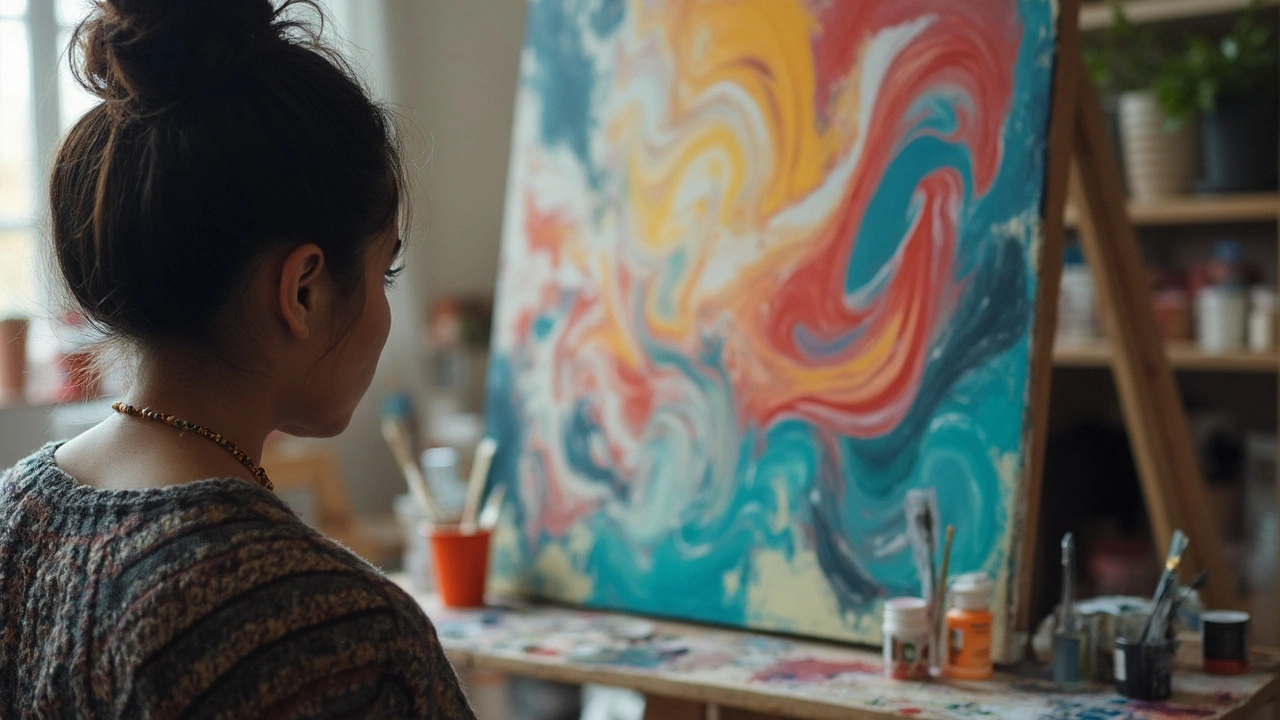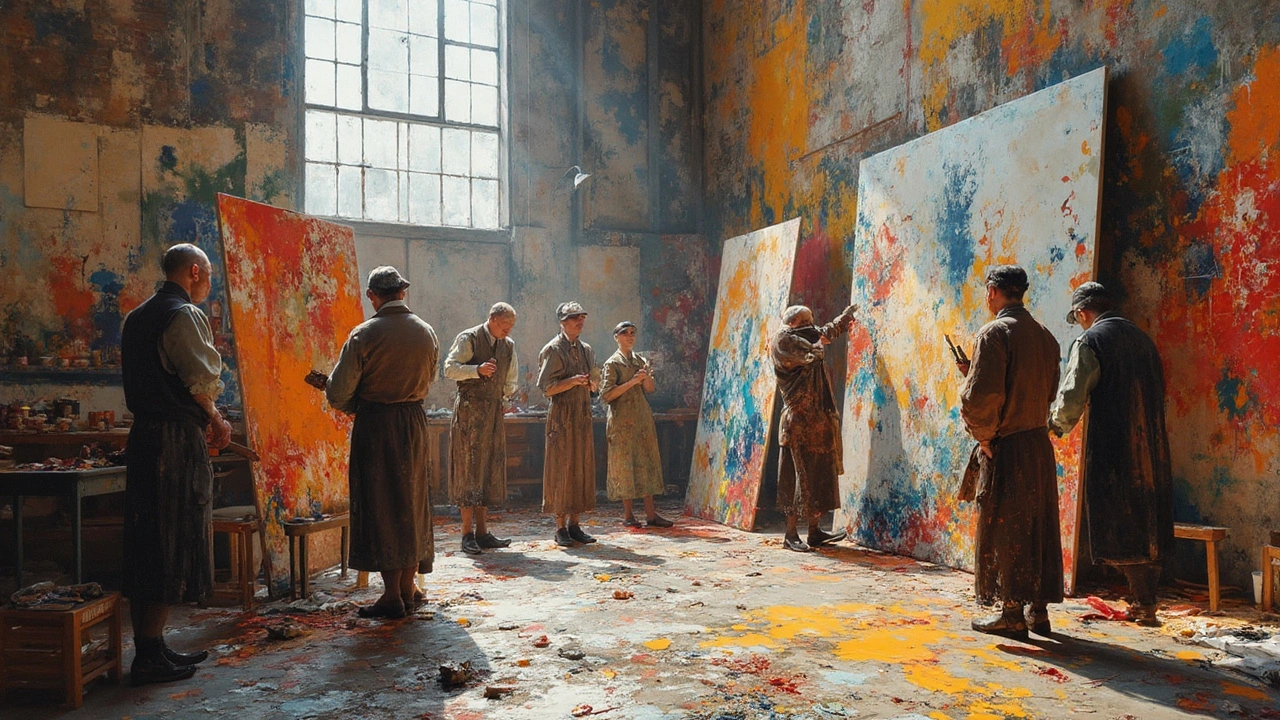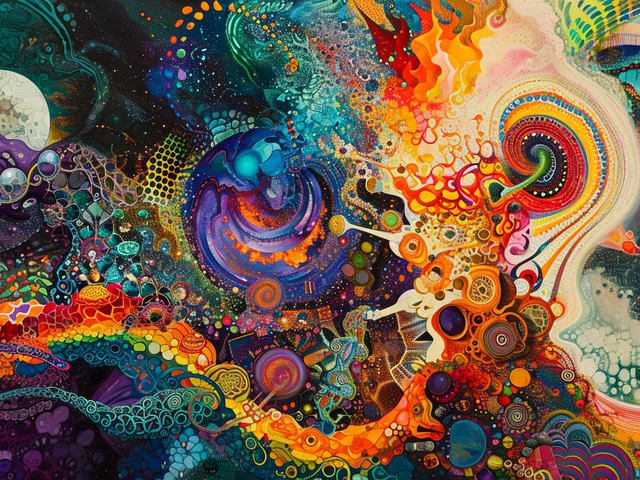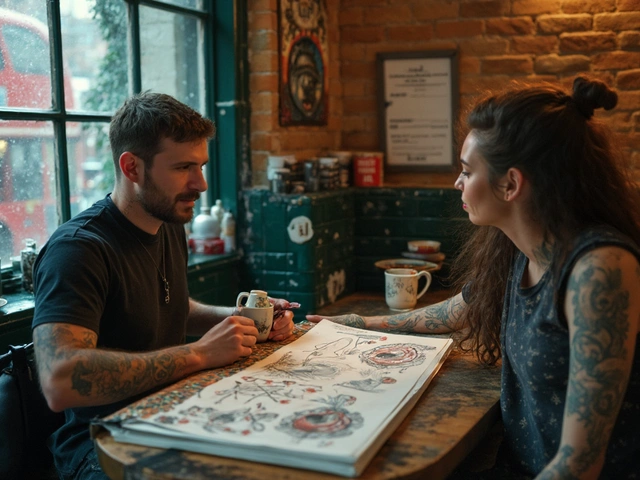Back in the late 1940s, something wild started happening on giant canvases in New York. Painters ditched the stuffy rules, grabbed oversized brushes and even sticks, and let their feelings explode through color and motion. The gallery crowd didn’t know what hit them—some called it genius, others madness. Yet, what nobody could deny was this: Abstract Expressionism threw a bomb of freedom and rebellion into the world of art and set the stage for everything that followed.
The Birth of Abstract Expressionism: More Than Just Paint on Canvas
Most people don’t realize how radical Abstract Expressionism was. Before it, big names in art were all about precise figures or dreamy landscapes—a kind of control and polish that artists like Jackson Pollock wanted to shake off like crumbs. Pollock, Mark Rothko, Willem de Kooning—these guys didn’t just want art to look good. They wanted it to feel like a gut punch, to dig into your head and leave a mark. After World War II, when the world felt lost and raw, a group of mostly American painters started pouring themselves onto canvas—sometimes literally—trying to trap their own energy, anger, or pure joy in a way nobody had really done.
It wasn’t just about making pretty pictures. This was about showing that what you feel can matter more than what you see. Getting messy, making mistakes, and showing emotion right out in the open—this was wild in the strict world of art. Critics and fans started arguing: Is it art if it doesn’t show anything you recognize? But for the first time, artists were saying, “Who cares?” These painters wanted you to step up to a piece and get hit with a pure feeling, not a tidy story or a lesson. That’s what made it so different.
There’s this classic story about Pollock working in his barn—he’d throw paint straight from the can, smoking and listening to jazz, letting everything flow in real time. Suddenly, anyone could see that art wasn’t just about what’s on the canvas. It was the action, the moment, the mess itself. The whole movement, though pretty much born in New York’s bustling postwar scene, didn’t care much for borders—it quickly became a global thing, inspiring countless copycats and rebels in Europe, Japan, and elsewhere. And unlike the art before it, Abstract Expressionism was open to anyone’s interpretation, which made it both inviting and endlessly mysterious.
Key Artists Who Broke the Rules
If art had rock stars, Abstract Expressionism owned the stage in the 1950s. Jackson Pollock was the wildest—he found fame for his “drip paintings,” which look kind of random but are actually a crazy dance of instinct and control. Critics once called his work “Jack the Dripper.” Pollock once said, “I want to express my feelings rather than illustrate them.” And honestly, when you stand up close to one of his huge canvases, you get this sense of electricity—like you’re about to get shocked.
But Pollock wasn’t the only rule-breaker. Mark Rothko went in a completely different direction—large rectangles of color that seem to glow or shimmer, depending on your mood. Some people stand in front of a Rothko and just stare for ages, feeling kind of haunted or calm, depending on the colors. He wanted viewers to get swallowed by the emotion of color alone, which was a giant leap from anything you could frame or photograph before.
And then there’s Willem de Kooning, the champion of aggressive brushstrokes. His “Woman” series, for example, didn’t just capture portraits—it tore them up and rebuilt them in wild, swiping movements. His paintings made people uncomfortable but also demanded attention. His wife, Elaine de Kooning, was no slouch either, mixing abstraction and portraiture in her pieces, showing that women had a place in this messy, male-led scene.
Franz Kline, Lee Krasner, Helen Frankenthaler, Barnett Newman… this list keeps going. Some were loud, some quiet, all of them going way past what anyone thought was possible at the time. They didn’t always agree with each other—their work was as different as jazz and heavy metal—but what bound them together was this idea of risk and raw communication. They didn’t whisper; they shouted their feelings onto the canvas, and the world listened, even when it didn’t always understand.
Techniques That Changed Art Forever
One of the wildest things about Abstract Expressionism is how its artists turned the whole process of making art inside-out. Before this, most painters sketched carefully, planned everything, and kept paintings tidy. Suddenly, Abstract Expressionists started using new tools—brooms, sticks, their own hands—and working on canvases spread on the floor. This approach, called “action painting,” made every painting into a physical, even athletic event. Pollock’s technique, for example, has been studied by scientists: his layers of drips actually follow fractal patterns, like those seen in nature (trees, rivers). That’s totally unplanned, just the magic of letting go.
But not all Abstract Expressionists splashed paint around. Rothko, Newman, and others focused on color fields—huge, glowing blocks and stripes of color meant to suck you in. Helen Frankenthaler brought yet another twist; she poured thinned paint onto raw canvas, creating soft, dreamy stains and shapes. Each technique gave viewers a different ride, from the chaos of Pollock’s action to Rothko’s calm magic. The big idea? Making the process visible, not hidden. You can see every brushstroke, every nervous twitch or bold move—nothing is disguised. The painting becomes a kind of diary, one you read with your eyes and your gut, not just your brain.
Tools changed too. Instead of sticking to tiny brushes or palette knives, these artists used anything handy. De Kooning would scrape and smash paint around with a spatula, even carving out color with rags or knives. Kline loved using big, thick brushes to slash black lines across the canvas. No technique was “wrong” if it got the feeling across. And that’s kind of the heart of the style: trust your gut, make it big, don’t explain yourself, and let the rhythm lead.
Want proof that this freedom still matters? You see it everywhere today—from street murals to digital art—creativity unleashed by process, not perfection. Anyone can pick up a canvas, ignore the rules, and tell their story in paint, mess and all. That’s Abstract Expressionism’s real power: showing you don’t need a plan, just a feeling and the guts to show it off.

The Worldwide Impact and Cultural Shockwaves
So how did a handful of New York painters wind up shaking the entire world? World War II had left Europe torn apart, so American cities, especially New York, became the new epicenter of art. Before this, Paris had always been the heart of the art scene, but suddenly, all eyes turned to the U.S.—Abstract Expressionism became the first truly American, globally respected art movement. Museums and collectors scrambled to buy these wild new works. In 1956, Pollock’s Number 17A sold for $200, at auction—revolutionary at the time. Fast forward: Pollock’s paintings now fetch more than $200 million. $200 million—for a painting most people at the time shrugged off as “just splatters.”
Governments got involved, too. The U.S. State Department actually used Abstract Expressionist art as cultural diplomacy during the Cold War, showing the world that American freedom—of expression, of emotion—was something unique and powerful. No secret police, no censors, just wild, messy, honest feelings put on display. In effect, art became a sort of soft weapon.
This rise wasn’t without backlash. Critics mocked the movement as childish or self-indulgent, and some people just saw chaos. But even if you didn’t get it, you couldn’t ignore it. European artists responded by forming their own groups: Art Informel and Tachisme in France, Gutai in Japan. These global artists picked up on the idea of process and personal story, twisting it their own way.
Below is a quick look at how Abstract Expressionism spread and shook things up:
| Region | Movement Inspired | Main Artists |
|---|---|---|
| France | Art Informel, Tachisme | Georges Mathieu, Jean Fautrier |
| Japan | Gutai | Jiro Yoshihara, Kazuo Shiraga |
| UK | Action Painting | Peter Lanyon, Frank Bowling |
| Germany | Neo-Expressionism | Anselm Kiefer |
Abstract Expressionism didn’t just change what filled museum walls—it changed who made art, who could be an artist, and who decided what mattered. Suddenly, anyone’s personal experience, gut feelings, or childhood ghosts could become the subject. You didn’t need to impress teachers or follow rules; you needed guts.
How Abstract Expressionism Still Shapes Modern Art
It’s tempting to think of Abstract Expressionism as history, but its influence is everywhere—maybe even more obvious now that technology lets everyone paint, edit, remix, or share like never before. Look at the bold murals springing up in city centers, or street artists splashing giant shapes and streaks across abandoned buildings. Many of today’s most Instagrammed art installations, with their wild colors and huge scale, owe their DNA to those messy, rule-breaking painters of the 1940s and ‘50s.
Digital art, too, picks up the movement’s energy. Glitch artists, generative painters, and VR creators riff on the idea of impulsive creation. Sometimes, artists talk about “flow state”—a term that perfectly fits Pollock’s approach. Modern art schools teach these techniques not because they’re easy, but because they break students out of perfection-mode. To this day, countless artists keep a quote from Rothko or de Kooning taped to their studio wall for motivation.
Abstract Expressionism also shattered gatekeeping in art. Museums once only valued “masterpieces”—now, even kindergarteners can see their own messy masterpieces as art. This acceptance trickled down to music, design, and fashion. You’ll catch echoes of de Kooning’s brash marks in runway shows and ad campaigns, or see Rothko’s color fields on album covers and home décor. The movement even changed therapy and self-expression: art therapists encourage clients to “paint their emotions,” just like the original icons did.
If you want to try taking inspiration from Abstract Expressionism, here’s a simple tip: Stop worrying if it’s “good.” Grab some paint, markers, or a tablet. Put on your favorite music. Move your whole body. Let mistakes happen. Your version of freedom may not look like Pollock’s, but if it feels true to you, you’re on the right track.
Tips for Enjoying and Creating Abstract Expressionist Art
Abstract Expressionism can be intimidating if you come from a world of tidy lines, clear stories, and explanations. But there’s real value in letting go. When you’re standing in front of a giant Pollock or Rothko, forget about “getting it.” Instead, pay attention to how your mood changes as you move closer, or how the colors make you feel. You’re not looking for a story; you’re looking for a spark. Take selfies, sketch, or just let yourself get lost in the mess—it’s all valid.
Here’s a list of ways to get the most out of Abstract Expressionist works, whether you’re creating or just looking:
- Try standing close to giant canvases for a different feeling—paintings often feel totally new up close.
- Look for repeating shapes or colors that grab your attention, rather than looking for recognizable objects.
- Ask yourself what emotion or memory the art brings up, even if it seems silly. That’s often where the magic happens.
- Make your own art by letting go of expectations. Use house paint or kitchen utensils if you want. It’s about energy, not accuracy.
- Read up on the artists’ lives. Sometimes knowing Pollock’s struggles with addiction or Rothko’s battles with depression adds insight or empathy.
And don’t be afraid to share your reactions—whether you love it, hate it, or don’t know what to think. That uncertain feeling? That’s what Abstract Expressionism is all about. It reminds us that art isn’t always about answers—sometimes, it’s about sparking new questions. That’s the wild, thrilling power of Abstract Expressionism: it gives you permission to feel, not just look—and sometimes, that’s all you need.



